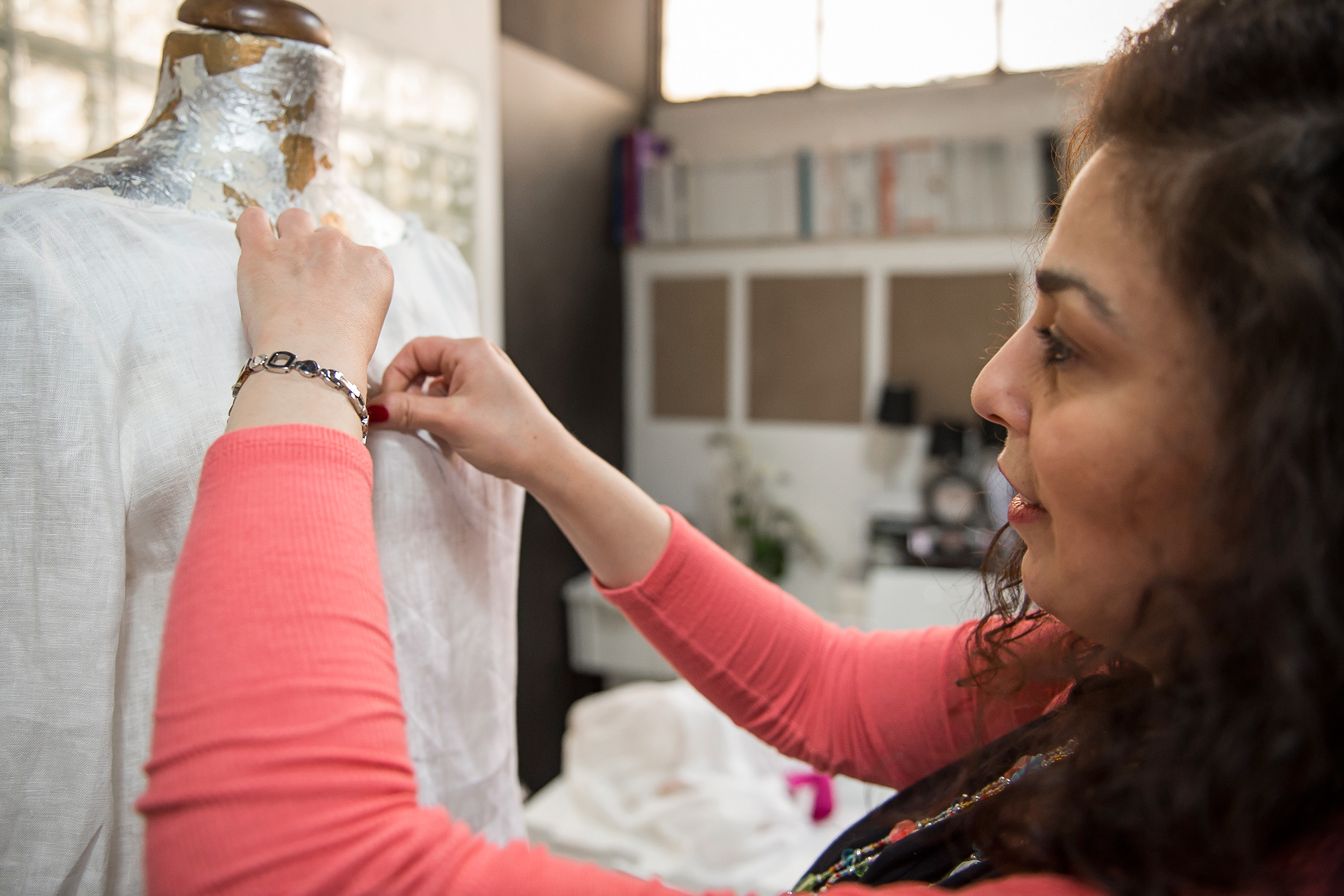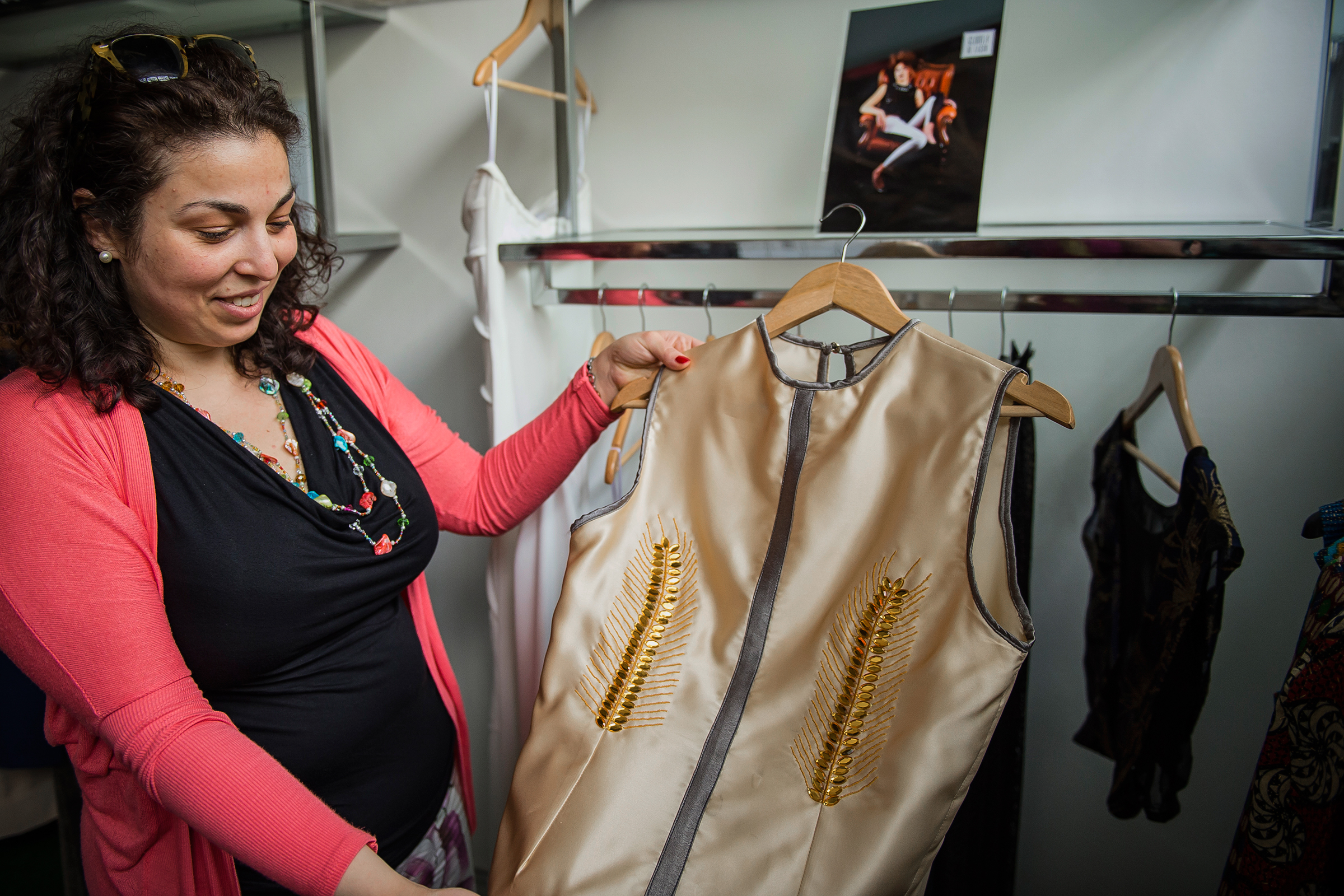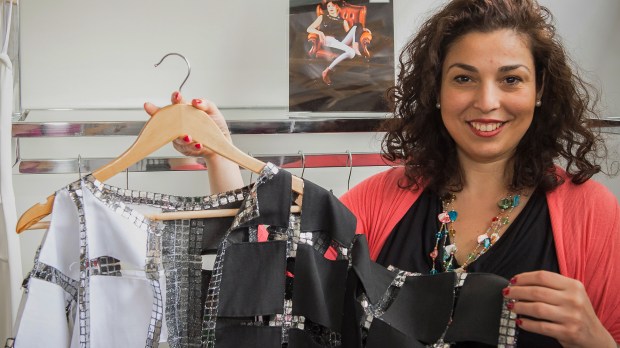“You can have thousands of beautiful designs in the drawer, but you’ll always be upstaged by the idea that’s become a reality.” It’s like life: “We wouldn’t be here if Someone, thinking of us, hadn’t also made us.”
We meet Gloria Di Iasio in a showroom in Trastevere, Rome. After going through various work experiences, she left the security of an office job to “pick up the thread” of a conversation that had been interrupted when she was just a girl. Today, at 35, she is an up-and-coming fashion designer, although she prefers to be called a “couturier,” i.e. a seamstress.
Gloria likes to get her hands hands dirty. “The work isn’t up on the catwalk at the show, that’s just one aspect. The work is when you are trying a new pattern with pins in your hands, when you thread the needle and prick your fingers! That’s the beautiful part of this work, that’s where you learn! The rest is necessary — the website, the business cards, the fashion show — but it’s the relationship with the material.” And the material, just like “human fabric,” isn’t always easy to work with. You have to make many mistakes before you get the final result.

One of the most important steps in creating a dress is trying it on the mannequin: “It’s the moment when you have to “de-defect” the cloth, as they say in slang. You have to remove many mistakes, you have to work on the mistakes, and by working on the mistakes you get results. As in life: we become something by working on our mistakes.”
It’s a method completely opposite to a society caught up in a desperate search for perfection, but detached from the material: “You think the factory-made product is perfect and maybe when you put it on it’s full of defects. Here it’s the opposite: in working on the defects you reach perfection (or you tend to reach it). It is a longer process but more successful.” It’s a job where you learn to forgive and be forgiven. “When you see the mistake, either you can take the dress and throw it way — that’s how you amass a gallery of unfinished works” — or … you act “like Michelangelo: he could have thrown away the piece of marble at the first strike at the grain, but instead he worked on it and made it a work of art. It all depends on you. I look back on my life,” Gloria reflects, “at the many people, the many encounters, the many experiences that shaped me.
“Yes, God is a tailor: he thought of one thing and he created it; he was both designer and builder. He was not scandalized by the matter; in fact, he so loved it that he became matter in the Son. He was not disconnected from the material, so why should I disconnect?
“My life is a bit like a tailored dress. Looking back, I realize that everything that has happened to me, has always happened at the right time, and everything that was taken away — even if initially one never understands why — was not right for me.” This is exactly what happened with fashion: “I wasn’t satisfied with my work, it seemed I wasn’t building anything, while I saw people around me daily making their entrepreneurial dreams become a reality.”
When she was 30, Gloria quit her job and, with the money she had set aside for a pilgrimage to the Holy Land, she enrolled at the Altieri Academy of Fashion and Art in Rome. It was a “blessed” choice, she says. “I took up design again, and the real tools of this trade: needles, threads, sewing machine, and I started producing my first small works.”

Gloria had to rise in the ranks: from her first work backstage (for other fashion houses) to unpaid collaboration with several Roman tailors. In 2015 in Milan, during the Expo year, she was a finalist in the “Baste a dream, sew an idea” competition, promoted by Confartigianato, an event affiliated with the Beijing Fashion Industry. She didn’t go unnoticed, and in February of 2016 she participated in the Casa Sanremo fashion show during the Italian Music Festival. Immediately after, a famous Roman stylist opened the “Spazio 2.0 Roma,” the new showroom where Gloria now displays her creations with the “Gloria Di Iasio” mark.
She works as an artisan, by hand, fashioning one-of-a-kind pieces. “Doing something well belongs to man’s nature. The point of doing it can’t be to compete with the market.
“It’s human work; it is a job not for consumption but for satisfaction. Otherwise, why do you get up in the morning, just for the money?”
Gloria’s creations are born by observing reality. She quotes the words of the photographer, Ferdinando Scianna: “Everything we create, we create it in a subordinate manner, for we are not the creators; we only fashion what has already been created; there is only one Creator.”
From the idea to the pattern to the cloth … the process is complex. “The idea only lives in relation to reality. If you think of a dress and not the zipper, it’s impossible to achieve. An idea is authentic if it is feasible, it needs reality to live.”
In this sense, Gloria says, working in fashion “approaches creation, it approaches God. We wouldn’t be here if Someone, thinking of us, hadn’t also made us.”

